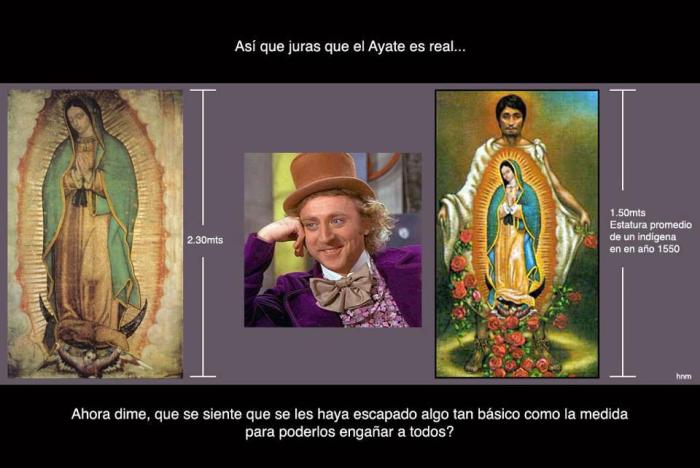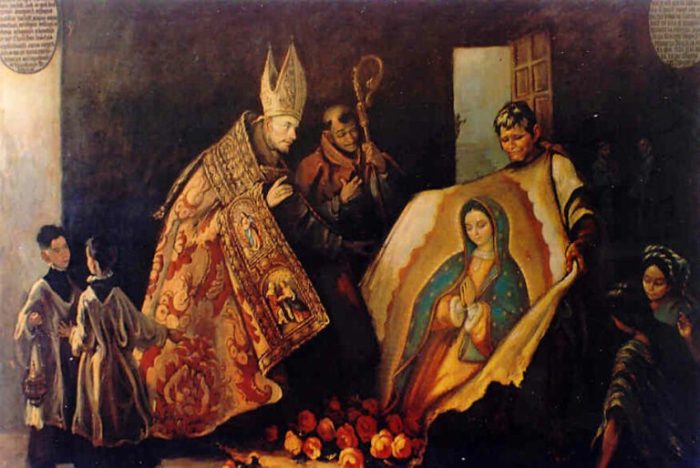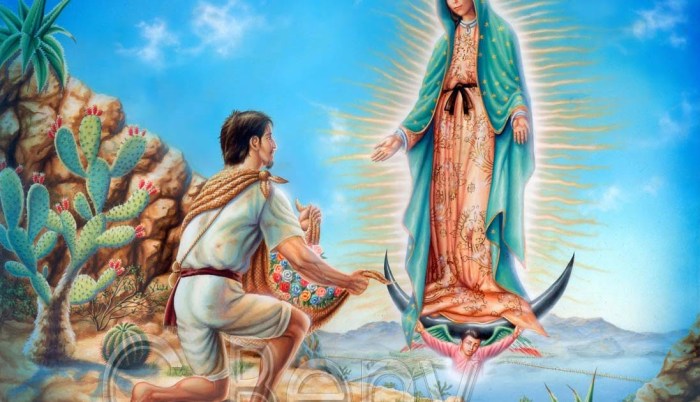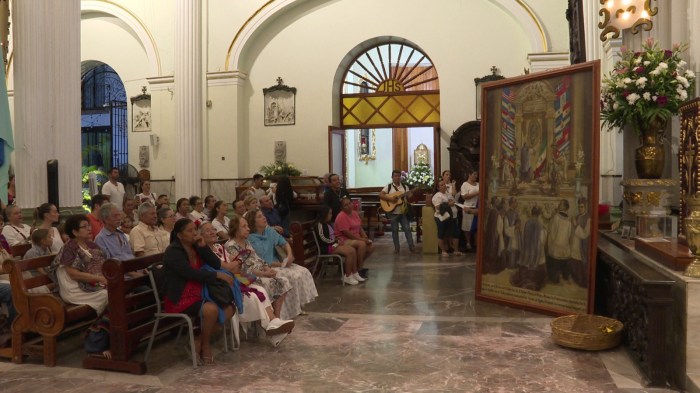The Ayate de Juan Diego original, a revered relic of Mexican Catholicism, stands as a testament to the profound impact of the Virgin Mary’s apparition on the nation’s religious and cultural landscape. Its unique physical characteristics, intricate symbolism, and enduring significance have captivated believers and scholars alike for centuries.
This sacred cloth, bearing the miraculous image of the Virgin of Guadalupe, has become an emblem of national identity and a symbol of hope and devotion. Its history, symbolism, and preservation efforts continue to fascinate and inspire, making it an enduring object of study and veneration.
The Historical Significance of the Ayate de Juan Diego

The Ayate de Juan Diego is a revered religious artifact in Mexican culture and a symbol of the apparition of the Virgin Mary to Juan Diego in 1531. Its historical significance stems from its association with the spread of Catholicism in Mexico and the cultural identity of the Mexican people.
According to Catholic tradition, the Virgin Mary appeared to Juan Diego, a humble Aztec peasant, on Tepeyac Hill near Mexico City on December 9, 1531. She instructed him to request that the bishop build a church on the site. Despite the bishop’s initial skepticism, the Virgin Mary left an image of herself imprinted on Juan Diego’s tilma, a coarse cloak made of cactus fibers.
This image, known as the Ayate de Juan Diego, became a powerful symbol of the Virgin Mary’s intercession and a catalyst for the conversion of many indigenous people to Christianity.
Timeline of Events
- December 9, 1531:The Virgin Mary appears to Juan Diego on Tepeyac Hill.
- December 12, 1531:Juan Diego presents the Ayate to Bishop Zumárraga.
- 1533:A small chapel is built on Tepeyac Hill.
- 1555:The chapel is expanded into a larger basilica.
- 1794:The Ayate is moved to the Metropolitan Cathedral of Mexico City.
- 1929:The Ayate is returned to the Basilica of Guadalupe.
Cultural and Religious Impact
The Ayate de Juan Diego has had a profound cultural and religious impact on Mexican society. It is considered a national treasure and a symbol of Mexican identity. The Basilica of Guadalupe, where the Ayate is housed, is one of the most visited pilgrimage sites in the world, attracting millions of pilgrims each year.
The image of the Virgin Mary on the Ayate has been reproduced countless times in art, music, and literature, becoming an iconic representation of Mexican Catholicism and a source of inspiration and devotion for many Mexicans.
The Physical Characteristics of the Ayate de Juan Diego

The Ayate de Juan Diego is a rectangular piece of coarse, unspun cloth made from the fibers of the maguey plant, a type of agave. It measures approximately 170 by 105 centimeters (67 by 41 inches) and is in relatively good condition, despite its age.
The cloth is a dull brown color and has a rough texture. It is believed to have been woven by Juan Diego’s mother, Maria Lucia.
The original ayate de juan diego is a miraculous cloth bearing the image of the Virgin Mary. Its significance has been debated, but one thing is clear: it has inspired many people. One way to explore this inspiration is to look at a map of North America biomes . The diverse ecosystems of the continent provide a rich tapestry of life, just as the ayate de juan diego represents a tapestry of faith.
Unique Features and Iconography
The most striking feature of the Ayate is the image of the Virgin Mary that is imprinted on it. The image is approximately 150 by 100 centimeters (59 by 39 inches) and is depicted in a standing position, with her hands folded in prayer.
She is wearing a blue mantle and a white tunic, and her head is covered with a white veil. The image is surrounded by a halo of golden light, and there are several symbols depicted around her, including stars, flowers, and birds.
Scientific Studies and Examinations
The Ayate has been the subject of numerous scientific studies and examinations over the years. These studies have confirmed that the image of the Virgin Mary is not a painting or a print, but rather an imprint that is embedded in the fibers of the cloth.
The studies have also shown that the image is not a product of any known artistic technique, and that it is not possible to reproduce it using modern methods.
The Symbolism and Meaning of the Ayate de Juan Diego

The Ayate de Juan Diego is a powerful symbol of the Virgin Mary’s role in Mexican Catholicism. As a representation of her miraculous appearance to Juan Diego in 1531, the Ayate has profound theological and spiritual significance.The colors, objects, and figures depicted on the Ayate carry rich symbolism.
The Virgin Mary is depicted wearing a blue mantle, which represents her purity and heavenly nature. The four-petaled flower on her chest symbolizes the cross and the four cardinal directions, representing her universal presence. The moon beneath her feet signifies her triumph over evil, and the stars around her head represent her celestial glory.The
cultural and historical context of the Ayate also influenced its symbolism. The apparition of the Virgin Mary to Juan Diego occurred during a time of great upheaval for the indigenous population of Mexico. The conquest of Mexico by the Spanish had disrupted their traditional beliefs and way of life.
The Ayate became a symbol of hope and comfort for the indigenous people, representing the Virgin Mary as a protector and intercessor.
The Conservation and Preservation of the Ayate de Juan Diego: Ayate De Juan Diego Original

The Ayate de Juan Diego is currently housed in the Basilica of Our Lady of Guadalupe in Mexico City, where it is kept under strict environmental controls to ensure its preservation. The Ayate is stored in a climate-controlled vault, which maintains a constant temperature and humidity to prevent damage from environmental factors such as heat, moisture, and light.
The Ayate is also protected from dust and other airborne pollutants by a sealed glass case.Conservation efforts for the Ayate have focused on preserving its original materials and preventing further deterioration. The Ayate has been reinforced with a backing of fine linen to provide additional support and prevent tearing.
The edges of the Ayate have also been carefully repaired to prevent fraying. Additionally, the Ayate has been treated with a chemical solution to prevent fading and discoloration.Conserving and preserving the Ayate de Juan Diego presents unique challenges and ethical considerations.
As a significant religious and historical artifact, it is essential to maintain its authenticity and integrity while also ensuring its longevity. The conservation efforts must be carefully balanced to avoid altering the original materials or compromising the Ayate’s historical and spiritual value.
Conservation Techniques, Ayate de juan diego original
* Climate-controlled storage
- Sealed glass case
- Backing with fine linen
- Edge repair
- Chemical treatment to prevent fading
Challenges and Ethical Considerations
* Balancing authenticity and preservation
- Ensuring minimal alteration of original materials
- Respecting the Ayate’s religious and historical significance
Questions and Answers
What is the historical significance of the Ayate de Juan Diego?
The Ayate de Juan Diego is believed to have been created during the apparition of the Virgin Mary to Juan Diego in 1531. It serves as a physical representation of the Virgin’s appearance and has become a symbol of her role in Mexican Catholicism.
What are the unique physical characteristics of the Ayate de Juan Diego?
The Ayate is a rectangular piece of coarse cloth, approximately 1.7 meters long and 1 meter wide. It bears the image of the Virgin Mary, depicted in vibrant colors with intricate details. The cloth has remained remarkably well-preserved despite its age and extensive handling.
What is the theological significance of the Ayate de Juan Diego?
The Ayate is venerated as a sacred relic representing the Virgin Mary’s role as the protector and patroness of Mexico. It is believed to embody her message of love, compassion, and hope, and serves as a reminder of her presence in the lives of Mexican Catholics.